Whorlton Bridge programme
What's happening to Whorlton Bridge.
Because the bridge is a grade II* listed structure and a Scheduled Monument, we will need to work closely with Historic England and the Environment Agency (EA) throughout the process.
We have to carefully test different sections of the bridge before we can establish what work will be needed and the future capacity restrictions of the bridge. This will then allow us to develop a plan of what works are required. Before any works can start and at each stage, approval from the EA, Historic England and Scheduled Monument Consent (SMC) which has to be submitted to the Secretary of State for Digital, Culture, Media and Sport for approval.
Programme of work
The following is the anticipated programme. This assumes no delays throughout the process and that the scheme progresses as intended:
Anticipated programme | Date |
|---|---|
Develop Investigation and Testing Design contract and appoint a contractor | December 2020 to mid-March 2021 - complete |
Complete design of temporary works and Investigation and Testing scope | Mid-March to end of May 2021 - complete |
Submit a Scheduled Ancient Monument consent application | May 2021 - complete |
Procure a testing contractor to execute the works | June and July 2021 - complete |
Scheduled Monument Consent granted | July 2021 - complete |
Carry out Investigation and Testing contract | Final report received from contractor in August 2022 - complete |
Revisit the assessment following completion of the site works | Completion due in December 2022 - complete |
Design the required strengthening and refurbishment works and apply for Scheduled Monument Consent | Preliminary design in progress. Detailed design to start in June 2023 - complete |
October 2023 Update
Early compound works are beginning whilst various permissions are being sought to carry out repair works.
These permissions notably include Scheduled Ancient Monument Consent, with an application made to Historic England for the works. It is expected a decision will be confirmed late 2023 when the full dismantling and restoration works can begin.
June 2023 Update
Our contractor Volker Laser has broken ground to review the existing anchorage to all four corners of the bridge.
Following agreement with Historic England, the works are being carried out to ensure that we fully understand the existing below ground arrangements and are able to preserve the ancient monument which has been there since 1831.
Investigations will be going on throughout July to understand how the anchorages interact with the Toll House. These investigative works include excavation of the carriageway to expose the anchor points and understand how they are secured to the existing concrete foundations, CCTV and 3D modelling to review and assess the structure beneath the surface.
These works will ultimately inform the detailed design of the proposed restoration of Whorlton Bridge after we have assessed the results. At this point, an application can be made to Historic England for Scheduled Ancient Monument Consent.
May 2023 Update
The Council has continued to work behind the scenes to progress with the Whorlton Bridge project and we are pleased to announce that we have now obtained Historic England approval to undertake intrusive investigations to the anchorage points of the structure. This approval is vital in assisting with the detailed design proposals with these important works scheduled to commence the week commencing 22 May 2023.
Other works are also planned to be done at the same time including, excavation of bore holes and trial pits and CCTV surveys to help us understand how the chains are connected and inform what works are required below ground.
Following the completion of these works the project team will be in a position to formally submit an application for Scheduled Monument Consent. This is likely to be in the next 2-3 months.
Once all necessary investigations have been completed and additional consents are in place, we will negotiate a contract during the Summer with a view to works commencing in the Autumn with our preferred contractor.
March 2023 Update
The feasibility stage is now complete and discussions are ongoing with Historic England to agree the full scope of the project. Boreholes and investigation of the existing anchorage are to take place in the next 6 weeks. This will allow us to understand how the chains are connected and inform what works are required below ground. The latest programme is to be in a position to formally submit to Historic England for Scheduled Monument Consent within the next 12 weeks. A price for the works is being built up by our supplier of choice to formally enter into a construction contract in summer.
February 2023 Update
Pell Frischmann (Design Consultant) VolkerLaser (Specialist Contractor) and Blackett-Ord Conservation (Accredited Conservation Engineers) continue to work together to determine the requirements and preliminary design for the refurbishment of the bridge including updating of the cost estimates. This work is programmed to be complete by the end of February and following a review of the proposals will then progress into a detailed design phase which will allow the programme to be finalised early in 2023 with a view for refurbishments to commence in summer 2023.
We are also currently working with our Contractor to review options for a site compound and working space to help inform the project costings, phasing, and programming. Whilst much of the work will occur using overhead gantries and be retained within the highway corridor, the linear nature of the site means that we will need to utilise an area adjacent the highway for temporary works, material storage, offices etc.
December 2022 Update
Further testing and investigation work has taken place this month to verify and conclude the bridge assessment process. Five of the critical parts that connect the suspension rods to the timber bridge deck were temporarily removed from the bridge and tested under laboratory conditions to confirm that their behaviour under load matches the theoretical behaviour and capacity that our Consultants have calculated. The wrought iron elements were carefully selected for testing to ensure we had a representative sample of the different shapes and sizes from across the bridge. When the bridge was originally constructed in the 1830s, manufacturing tolerances and quality control were not to the standards required today and therefore many of the parts of the bridge that have previously been assumed to be the same size are all slightly different which makes assessment, manufacturing and repairs challenging. The variances in size of elements only became apparent following the initial phase of investigation and testing completed earlier in the year.
Initial results from the tests appear to confirm that the wrought iron elements behave in a favourable manner meaning that we can finally close out the majority of the issues with the assessment of the bridge with our external Consultant Engineers. Various refurbishment options are currently under consideration, including preparation of cost estimates, to ensure the available budget for the works provides maximum benefit to the life and usability of the bridge.
Now that the assessment, testing and investigation elements of work are complete, the requirements and preliminary design for the refurbishment of the bridge are currently being considered by Pell Frischmann (Design Consultant) VolkerLaser (Specialist Contractor) and Blackett-Ord Conservation (Accredited Conservation Engineers). They will work together to update the cost estimates and progress into a detailed design phase which will allow the programme to be finalised early in 2023 with a view for refurbishments to commence in summer 2023.
October 2022 update
The final testing and investigation report from Taziker Industrial Ltd. has been reviewed by Design Consultants Pell Frishcmann, who have highlighted two areas of Taziker's work that has been inconclusive:
- Strength of the lower stirrups that connect the timber beam to the suspension hangers.
- Geometrical and condition information for the chain saddles positioned to the tops of all four towers.
The requirements and preliminary design for the refurbishment of the bridge are currently being considered by Pell Frischmann (Design Consultant) VolkerLaser (Specialist Contractor) and Blackett-Ord Conservation (Accredited Conservation Engineers), who will work together to update the cost estimates and progress into a detailed design.
The project is on track to be completed no later than March 2024, as stipulated by the Levelling Up Funding.
Findings:
Further thought and detailed design is needed in the following areas:
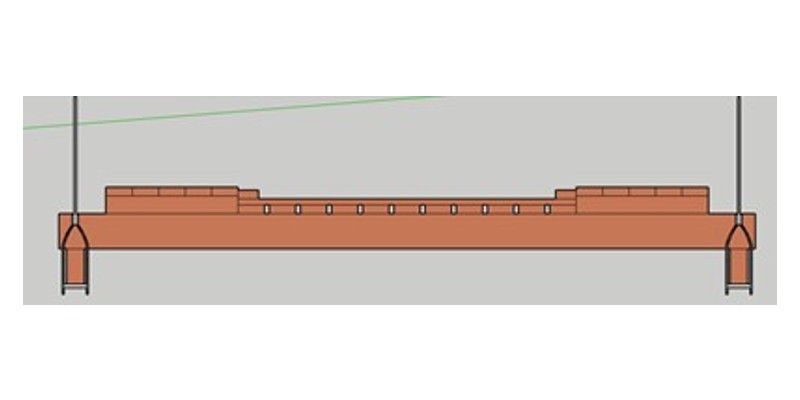
Cross section of revised deck arrangement (currently under consideration)
Strength of the timber deck:
To allow the bridge to reopen to vehicles and pedestrians, some of the materials used in the timber deck need to be improved along with a review of the layout and width of the deck. This work is nearing conclusion and is then subject to approval by Historic England.
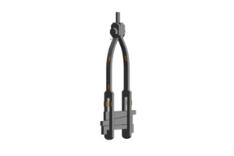
3D view of Lower Stirrup Arrangement
Strength of the wrought iron lower stirrups:
The shape of the stirrups has been accurately recorded and assessed and the results show that the stirrups are theoretically only just strong enough to hold the required load on the bridge. Plans are underway to remove some stirrups and load test them in laboratory conditions to confirm the assessment results and that no modifications are needed.
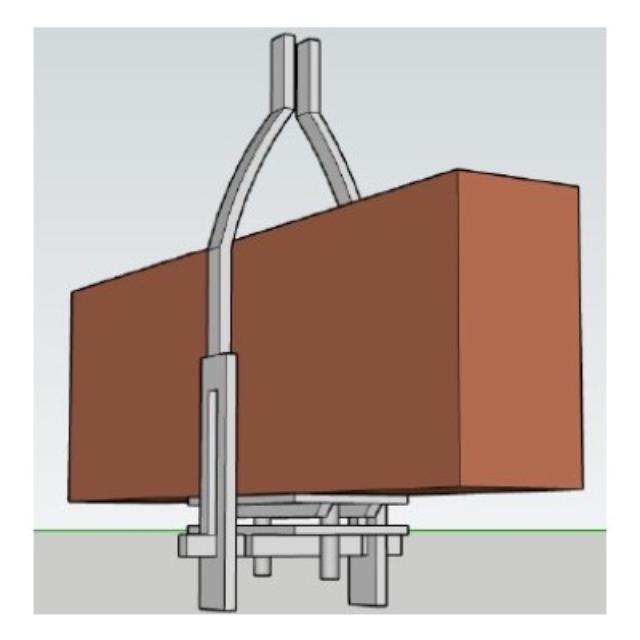
3D view of proposed adjustable hanger wedge
Vertical alignment of the timber deck:
The current vertical alignment of the timber deck is not favourable and therefore the deck needs to be levelled out over the full span to allow even distribution of the loadings. This is how the bridge was initially designed. In order to allow maintenance and tuning of the vertical alignment, alteration to the tapered wedge details shown in Image 2 is being considered. Proposals include the addition of a height adjustable wedge as shown in Image 3. This will be subject to approval from Historic England.
July 2022 update
Taziker Industrial Ltd. have completed investigation and testing works on Whorlton Suspension Bridge.
The results of their findings determine that the initial method proposed to separate the main suspension chains for inspection and analysis was unsuccessful due to the significant extent of corrosion to the main chain pins that connect the chain links together. The site works were therefore put on hold until a new design could be developed to allow the safe and sympathetic removal of main chain pins.
We have concluded that the main suspension chains can support the anticipated pedestrian and vehicular loading. Elements of the timber deck and connection details to the hangers still fail assessment for the anticipated loads and our consultant engineers are progressing alternative designs and assessment methods to overcome the few remaining assessment failures.
We are still working to conclude and evaluate the findings obtained over the last 6 months, while continuing to work to develop the refurbishment and where necessary strengthening scheme to allow the bridge to be reopened to both pedestrians and vehicles within the timeframe set by the Levelling Up Funding bid.
Findings
We have found a number of typical defects associated with fatigue and consistent overstressing of individual members. There are also widespread generic defects associated with the age and type of the structure.

Example of a failed hanger connecting bolt
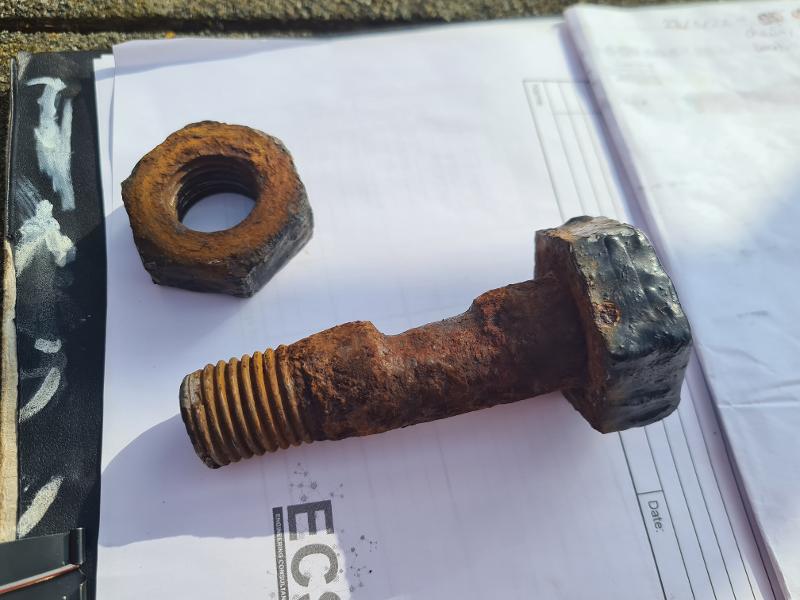
Example of a typical worn hanger connecting bolt
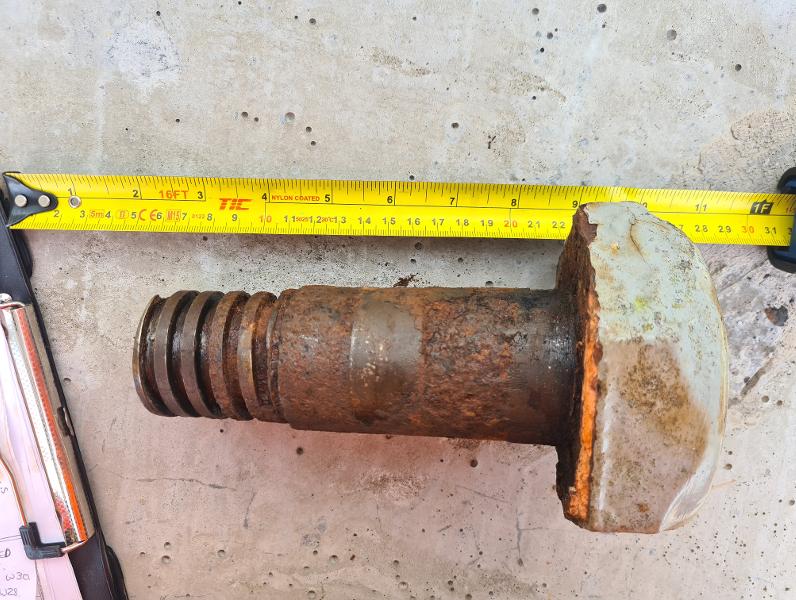
Example of a typical main chain connecting pin
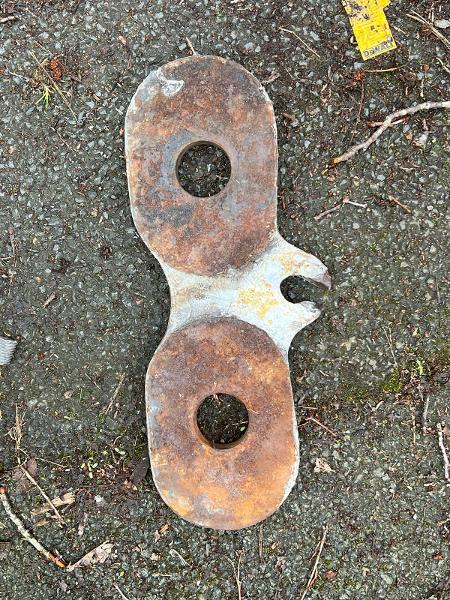
Example of a broken hanger connection plate that forms a main chain link
January 2022 update
Testing works commenced on Monday 1 November 2021 and we have concluded approximately 90% of the overall testing and investigation scope of works. There have been issues with the initial proposed method to separate the suspension chain links for inspection and therefore our contractor had to leave the site prior to Christmas to develop a revised chain separation plan. The contractor is planning to return to site in the middle of February to complete their remaining works.
Design and assessment work is ongoing to take into consideration the findings of the testing and develop the refurbishment works proposals. The delays experienced during the investigation and testing period have unfortunately had an impact on the overall programme. This has been updated in the table below.
October 2021 update
As part of the government's Comprehensive Spending Review on Wednesday 27 October, it has been announced that we have been successful in bidding for £20m from the Government's Levelling Up Fund for projects in Bishop Auckland including funding to support the repairs and reopening of Whorlton Bridge.
Securing this funding is a major step forward in the project to repair the bridge and will also support the development of a visitor centre to celebrate the bridge's transport heritage.
August 2021 update
Testing works on the bridge were planned to start in August, but have been rescheduled for the coming weeks, hopefully starting by Monday 13 September.
Although this will delay our reports, we do not expect it to impact greatly the overall programme.
It is anticipated that the investigation works will be completed by the end of November, when we will revisit the assessment before developing our plans for the future works.
The table outlining key project dates has been updated below.
July 2021 update
The Scheduled Ancient Monument consent application has been approved by Historic England.
We are currently progressing with the final phases of the procurement process to appoint an appropriate contractor to carry out the testing works.
Once appointed the contractor can begin the works on site to begin the testing of the structure.
June 2021 update
Scheduled Ancient Monument consent application was submitted to Historic England at the end of May 2021 and we are waiting for the outcome of the application.
We are currently progressing with the initial phases of the procurement to appoint an appropriate contractor to carry out the testing works.
May 2021 update
Our appointed specialist steelworks contractor Taziker have been working alongside accredited conservation specialists, designers and suppliers to develop the plan for the required investigations along with a Scheduled Monument Consent application for the consideration of Historic England.
We are currently intending to submit the Scheduled Ancient Monument consent application to Historic England at the end of May 2021.
Due to a short delay in the procurement process, we have revised the dates of the initial phases of the programme to reflect this. This should not impact the programme for the repair works which are scheduled to begin in July 2022 subject to funding.
Procurement of the contractor to execute the investigation and testing works is to commence in June 2021.
March 2021 update
We are pleased to say that the contract for the provision of temporary works designs, methodologies and specifications was awarded to Taziker on Friday 12 March.
We will now be working closely with them to develop proposals for a scheme of investigation and testing works. This will give us a more detailed understanding of the overall condition of the bridge including areas currently hidden from view.
Once the scheme has been developed it will have to be submitted to Historic England for Scheduled Ancient Monument consent before any physical testing can take place. This will then allow us to progress to the next stage which is to appoint a specialist Contractor to undertake the investigation and testing works.
February 2021 update
A procurement exercise is currently underway to appoint a steelwork contractor competent in assessment and inspection of historical wrought iron structures. The contract will require the contractor to design a series of temporary works systems to allow separation of the chain links and hangers in various locations for further inspection and assessment. A programme and methodology of in-situ non-destructive testing will also be developed. It is a critical requirement of this phase to understand how fatigue has compromised aspects of the structure over the 190-year life.
The investigation and testing contract will be developed alongside an accredited Conservation Engineer who will assist in ensuring the methods proposed are acceptable to Historic England. Before the works can commence on site, Scheduled Ancient Monument consent will be required once the testing plans are developed.
Tenders are due back for the Investigation and Testing design contract on the 26 February 2021.
January 2021 update
A contract has been developed that will allow an independent contractor to design temporary works to allow inspection and assessment of the bridge. We are working with our procurement team to develop the tendering proposal.
Alternative crossing
Consideration of an alternative crossing has been given however there are significant access issues for construction and the costs involved would be significantly prohibitive. The construction and presence of an alternative crossing over or adjacent to the existing structure would also cause an obstruction to completion of some of the repair works.


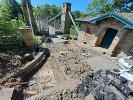
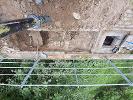
 Share this page on Facebook
Share this page on Facebook
 Share this page on Twitter
Share this page on Twitter
 Print this page
Print this page





